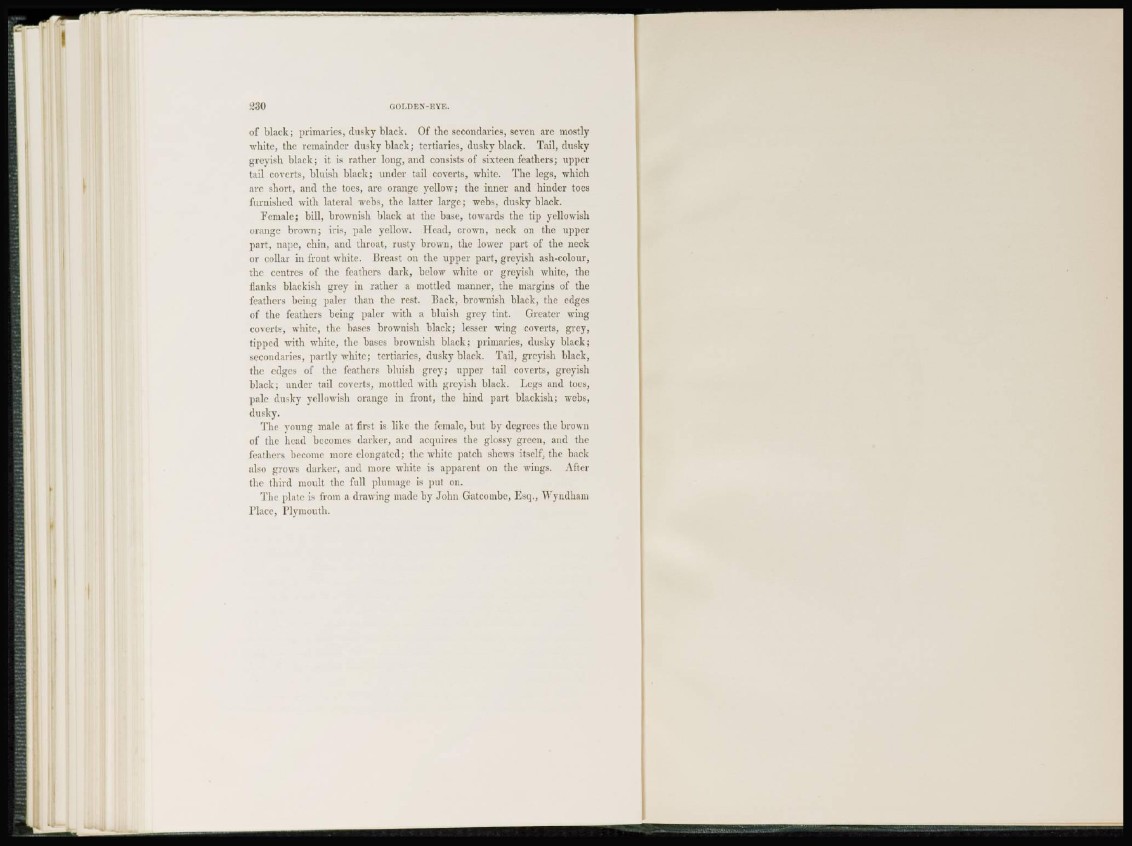
of black; primaries, dusky black. Of the secondaries, seven are mostly
white, the remainder dusky black; tertiaries, dusky black. Tail, dusky
greyish black; it is rather long, and consists of sixteen feathers; upper
tail coverts, bluish black; under tail coverts, white. The legs, which
are short, and the toes, are orange yellow; the inner and hinder toes
furnished with lateral webs, the latter large; webs, dusky black.
Female; bill, brownish black at the base, towards the tip yellowish
orange brown; iris, pale yellow. Head, crown, neck on the upper
part, nape, chin, and throat, rusty brown, the lower part of the neck
or collar in front white. Breast on the upper part, greyish ash-colour,
the centres of the feathers dark, below white or greyish white, the
flanks blackish grey in rather a mottled manner, the margins of the
feathers being paler than the rest. Back, brownish black, the edges
of the feathers being paler with a bluish grey tint. Greater wing
coverts, white, the bases brownish black; lesser wing coverts, grey,
tipped with wdiitc, the bases brownish black; primaries, dusky black;
secondaries, partly white; tertiaries, dusky black. Tail, greyish black,
the edges of the feathers bluish grey; upper tail coverts, greyish
black; under tail coverts, mottled with greyish black. Legs and toes,
pale dusky yellowish orange in front, the hind part blackish; webs,
dusky.
The young male at first is like the female, but by degrees the brown
of the head becomes darker, and acquires the glossy green, and the
feathers become more elongated; the white patch shews itself, the back
also grows darker, and more white is apparent on the wings. After
the third moult the full plumage is put on.
The plate is from a drawing made by John Gatcombe, Esq., Wyndhani
Place, Plymouth.